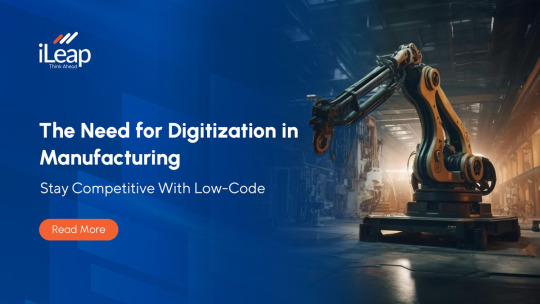#ai invoice processing automation
Explore tagged Tumblr posts
Text
Revolutionize Accounts Payable with AI Invoice Processing
Unlock efficiency with AI Invoice Processing through Astute AP Automation. Streamline invoice workflows, reduce errors, and boost productivity with AI-driven automation. Enhance accuracy, accelerate approvals, and optimize accounts payable processes effortlessly. Discover how automation transforms financial operations—visit Astute AP Automation today!
0 notes
Text
How to Automate Document Processing for Your Business: A Step-by-Step Guide
Managing documents manually is one of the biggest time drains in business today. From processing invoices and contracts to organizing customer forms, these repetitive tasks eat up hours every week. The good news? Automating document processing is simpler (and more affordable) than you might think.
In this easy-to-follow guide, we’ll show you step-by-step how to automate document processing in your business—saving you time, reducing errors, and boosting productivity.
What You’ll Need
A scanner (if you still have paper documents)
A document processing software (like AppleTechSoft’s Document Processing Solution)
Access to your business’s document workflows (invoices, forms, receipts, etc.)
Step 1: Identify Documents You Want to Automate
Start by making a list of documents that take up the most time to process. Common examples include:
Invoices and bills
Purchase orders
Customer application forms
Contracts and agreements
Expense receipts
Tip: Prioritize documents that are repetitive and high volume.
Step 2: Digitize Your Paper Documents
If you’re still handling paper, scan your documents into digital formats (PDF, JPEG, etc.). Most modern document processing tools work best with digital files.
Quick Tip: Use high-resolution scans (300 DPI or more) for accurate data extraction.
Step 3: Choose a Document Processing Tool
Look for a platform that offers:
OCR (Optical Character Recognition) to extract text from scanned images
AI-powered data extraction to capture key fields like dates, names, and totals
Integration with your accounting software, CRM, or database
Security and compliance features to protect sensitive data
AppleTechSoft’s Document Processing Solution ticks all these boxes and more.
Step 4: Define Your Workflow Rules
Tell your software what you want it to do with your documents. For example:
Extract vendor name, date, and amount from invoices
Automatically save contracts to a shared folder
Send expense reports directly to accounting
Most tools offer an easy drag-and-drop interface or templates to set these rules up.
Step 5: Test Your Automation
Before going live, test the workflow with sample documents. Check if:
Data is extracted accurately
Documents are routed to the right folders or apps
Any errors or mismatches are flagged
Tweak your settings as needed.
Step 6: Go Live and Monitor
Once you’re confident in your workflow, deploy it for daily use. Monitor the automation for the first few weeks to ensure it works as expected.
Pro Tip: Set up alerts for any failed extractions or mismatches so you can quickly correct issues.
Bonus Tips for Success
Regularly update your templates as your document formats change
Train your team on how to upload and manage documents in the system
Schedule periodic reviews to optimize and improve your workflows
Conclusion
Automating document processing can transform your business operations—from faster invoicing to smoother customer onboarding. With the right tools and a clear plan, you can streamline your paperwork and focus on what matters most: growing your business.
Ready to get started? Contact AppleTechSoft today to explore our Document Processing solutions.
#document processing#business automation#workflow automation#AI tools#paperless office#small business tips#productivity hacks#digital transformation#AppleTechSoft#business technology#OCR software#data extraction#invoicing automation#business growth#time saving tips
1 note
·
View note
Text
Streamlining Trucking Finances with Digital Invoice Management
Let’s talk invoices. I know, it might not be the most exciting topic when you’re out on the road, but stick with me for a minute—it’s actually smart for your business. Tired of handling stacks of paper invoices? It’s like trying to navigate rush hour traffic with a broken GPS. Papers get lost, numbers get messed up, and chasing down payments can feel like an endless loop. But here’s some good…

View On WordPress
#AI for trucking operations#AI invoice processing#automated invoicing systems#blockchain in trucking#business#cash flow management#cloud computing in trucking#cloud-based invoicing#digital invoicing for truckers#digital solutions for trucking#factoring services for truckers#Freight#freight industry#Freight Revenue Consultants#invoice automation in trucking#invoice factoring for truckers#invoice management software for truckers#logistics#real-time invoice tracking#scalable invoicing solutions#secure invoicing for truckers#small carriers#streamline trucking operations#Transportation#Trucking#trucking business efficiency#trucking cash flow solutions#trucking data insights#Trucking Financial Management#trucking financial tools
0 notes
Text
Tired of manual invoice processing slowing down your organization's digital transformation journey? 𝗦𝘁𝗿𝗲𝗮𝗺𝗹𝗶𝗻𝗲 𝗬𝗼𝘂𝗿 𝗔𝗰𝗰𝗼𝘂𝗻𝘁𝘀 𝗣𝗮𝘆𝗮𝗯𝗹𝗲 𝘄𝗶𝘁𝗵 iKapture! We offer a best-in-class solution for Accounts Payable automation that eliminates manual data entry, streamlines workflows and unlocks valuable insights for your business. Here's how iKapture empowers your invoice processing: 👉Automated Invoice Processing 👉Enhanced Efficiency 👉Improved Accuracy 👉Real-Time Visibility 👉Seamless Integration Let iKapture transform your AP processes! Contact us today to learn more! #digitaltransformation #automation #documentprocessing #ai #accountspayable #invoiceprocessing
#ikapture#ai#ap automation#accounts payable#invoice management system#free invoice software#invoice processing
0 notes
Text
0 notes
Text
Why Shipease is the Smartest Choice for E-Commerce Shipping in 2025

Why Shipease is the Smartest Choice for E-Commerce Shipping in 2025
In the ever-evolving world of e-commerce, efficient and reliable shipping isn’t just a feature — it’s the backbone of customer satisfaction and business growth. As we step into 2025, one platform continues to stand out for e-commerce businesses looking for a smarter, smoother, and more scalable shipping solution: Shipease.
Here’s why Shipease is the smartest choice for e-commerce shipping in 2025:
1. All-in-One Shipping Dashboard
Shipease eliminates the hassle of juggling multiple courier partners. With its centralized dashboard, you can compare rates, generate labels, schedule pickups, and track shipments — all in one place. It’s designed to save time, cut manual errors, and improve operational efficiency.
2. AI-Powered Courier Recommendations
Thanks to its smart algorithm, Shipease automatically suggests the best courier based on delivery location, cost, and performance history. This means faster deliveries, lower return rates, and happier customers.
3. Real-Time Tracking and Notifications
Today’s customers expect to know exactly where their order is. Shipease provides real-time tracking updates to both you and your buyers, reducing WISMO ("Where is my order?") queries and improving customer experience.
4. Seamless Integration with Major Marketplaces
Whether you're selling on Amazon, Shopify, WooCommerce, or your own website, Shipease easily integrates with major e-commerce platforms. Sync your orders effortlessly and manage your shipping in a streamlined workflow.
5. Flexible Shipping Options
From same-day delivery to cash on delivery (COD) and reverse logistics, Shipease offers a wide range of shipping options. This flexibility allows you to cater to diverse customer preferences and boost your overall conversion rates.
6. Affordable Pricing and Transparent Billing
Shipease offers competitive shipping rates with no hidden charges. With clear invoicing and billing insights, e-commerce sellers get complete visibility over shipping expenses, making budgeting and forecasting a breeze.
7. Automated NDR and RTO Management
Non-delivery reports (NDRs) and return-to-origin (RTO) shipments can be a nightmare for online sellers. Shipease automates the process of addressing delivery failures, communicates with customers, and helps minimize return costs.
8. Dedicated Support and Account Management
Need help fast? Shipease offers responsive customer support along with dedicated account managers who understand your business goals and help optimize your shipping strategy.
9. Data-Driven Insights for Smarter Decisions
With in-depth analytics and shipping performance reports, you can track KPIs, optimize courier selection, and uncover areas to improve logistics and customer experience.
10. Future-Ready Technology
In 2025, speed and adaptability are key. Shipease stays ahead of the curve by continuously upgrading its tech infrastructure, ensuring faster processing, enhanced security, and new features that support your e-commerce growth.
Conclusion
E-commerce success in 2025 hinges on delivering orders quickly, reliably, and affordably — and Shipease is built to help you do just that. Whether you’re a small seller or a large-scale brand, Shipease offers the tools, tech, and support you need to ship smarter, scale faster, and deliver better.
Switch to Shipease today — because smart businesses deserve smart shipping.
2 notes
·
View notes
Text
Enhance Document Management with AI and Automation
AI-powered document processing and smooth automation can help businesses become more accurate and efficient. More and more papers are being handled by organizations these days, ranging from contracts and scrawled notes to emails and invoices. Controlling these papers has long been a problem, but traditional approaches are often time-consuming, ineffective, and prone to mistakes. A cutting-edge technology called intelligent document processing (IDP) is revolutionizing how businesses handle papers.
2 notes
·
View notes
Text
2 notes
·
View notes
Text

AI’s Role in Business Process Automation
Automation has come a long way from simply replacing manual tasks with machines. With AI stepping into the scene, business process automation is no longer just about cutting costs or speeding up workflows—it’s about making smarter, more adaptive decisions that continuously evolve. AI isn't just doing what we tell it; it’s learning, predicting, and innovating in ways that redefine how businesses operate.
From hyperautomation to AI-powered chatbots and intelligent document processing, the world of automation is rapidly expanding. But what does the future hold?
What is Business Process Automation?
Business Process Automation (BPA) refers to the use of technology to streamline and automate repetitive, rule-based tasks within an organization. The goal is to improve efficiency, reduce errors, cut costs, and free up human workers for higher-value activities. BPA covers a wide range of functions, from automating simple data entry tasks to orchestrating complex workflows across multiple departments.
Traditional BPA solutions rely on predefined rules and scripts to automate tasks such as invoicing, payroll processing, customer service inquiries, and supply chain management. However, as businesses deal with increasing amounts of data and more complex decision-making requirements, AI is playing an increasingly critical role in enhancing BPA capabilities.
AI’s Role in Business Process Automation
AI is revolutionizing business process automation by introducing cognitive capabilities that allow systems to learn, adapt, and make intelligent decisions. Unlike traditional automation, which follows a strict set of rules, AI-driven BPA leverages machine learning, natural language processing (NLP), and computer vision to understand patterns, process unstructured data, and provide predictive insights.
Here are some of the key ways AI is enhancing BPA:
Self-Learning Systems: AI-powered BPA can analyze past workflows and optimize them dynamically without human intervention.
Advanced Data Processing: AI-driven tools can extract information from documents, emails, and customer interactions, enabling businesses to process data faster and more accurately.
Predictive Analytics: AI helps businesses forecast trends, detect anomalies, and make proactive decisions based on real-time insights.
Enhanced Customer Interactions: AI-powered chatbots and virtual assistants provide 24/7 support, improving customer service efficiency and satisfaction.
Automation of Complex Workflows: AI enables the automation of multi-step, decision-heavy processes, such as fraud detection, regulatory compliance, and personalized marketing campaigns.
As organizations seek more efficient ways to handle increasing data volumes and complex processes, AI-driven BPA is becoming a strategic priority. The ability of AI to analyze patterns, predict outcomes, and make intelligent decisions is transforming industries such as finance, healthcare, retail, and manufacturing.
“At the leading edge of automation, AI transforms routine workflows into smart, adaptive systems that think ahead. It’s not about merely accelerating tasks—it’s about creating an evolving framework that continuously optimizes operations for future challenges.”
— Emma Reynolds, CTO of QuantumOps
Trends in AI-Driven Business Process Automation
1. Hyperautomation
Hyperautomation, a term coined by Gartner, refers to the combination of AI, robotic process automation (RPA), and other advanced technologies to automate as many business processes as possible. By leveraging AI-powered bots and predictive analytics, companies can automate end-to-end processes, reducing operational costs and improving decision-making.
Hyperautomation enables organizations to move beyond simple task automation to more complex workflows, incorporating AI-driven insights to optimize efficiency continuously. This trend is expected to accelerate as businesses adopt AI-first strategies to stay competitive.
2. AI-Powered Chatbots and Virtual Assistants
Chatbots and virtual assistants are becoming increasingly sophisticated, enabling seamless interactions with customers and employees. AI-driven conversational interfaces are revolutionizing customer service, HR operations, and IT support by providing real-time assistance, answering queries, and resolving issues without human intervention.
The integration of AI with natural language processing (NLP) and sentiment analysis allows chatbots to understand context, emotions, and intent, providing more personalized responses. Future advancements in AI will enhance their capabilities, making them more intuitive and capable of handling complex tasks.
3. Process Mining and AI-Driven Insights
Process mining leverages AI to analyze business workflows, identify bottlenecks, and suggest improvements. By collecting data from enterprise systems, AI can provide actionable insights into process inefficiencies, allowing companies to optimize operations dynamically.
AI-powered process mining tools help businesses understand workflow deviations, uncover hidden inefficiencies, and implement data-driven solutions. This trend is expected to grow as organizations seek more visibility and control over their automated processes.
4. AI and Predictive Analytics for Decision-Making
AI-driven predictive analytics plays a crucial role in business process automation by forecasting trends, detecting anomalies, and making data-backed decisions. Companies are increasingly using AI to analyze customer behaviour, market trends, and operational risks, enabling them to make proactive decisions.
For example, in supply chain management, AI can predict demand fluctuations, optimize inventory levels, and prevent disruptions. In finance, AI-powered fraud detection systems analyze transaction patterns in real-time to prevent fraudulent activities. The future of BPA will heavily rely on AI-driven predictive capabilities to drive smarter business decisions.
5. AI-Enabled Document Processing and Intelligent OCR
Document-heavy industries such as legal, healthcare, and banking are benefiting from AI-powered Optical Character Recognition (OCR) and document processing solutions. AI can extract, classify, and process unstructured data from invoices, contracts, and forms, reducing manual effort and improving accuracy.
Intelligent document processing (IDP) combines AI, machine learning, and NLP to understand the context of documents, automate data entry, and integrate with existing enterprise systems. As AI models continue to improve, document processing automation will become more accurate and efficient.
Going Beyond Automation
The future of AI-driven BPA will go beyond automation—it will redefine how businesses function at their core. Here are some key predictions for the next decade:
Autonomous Decision-Making: AI systems will move beyond assisting human decisions to making autonomous decisions in areas such as finance, supply chain logistics, and healthcare management.
AI-Driven Creativity: AI will not just automate processes but also assist in creative and strategic business decisions, helping companies design products, create marketing strategies, and personalize customer experiences.
Human-AI Collaboration: AI will become an integral part of the workforce, working alongside employees as an intelligent assistant, boosting productivity and innovation.
Decentralized AI Systems: AI will become more distributed, with businesses using edge AI and blockchain-based automation to improve security, efficiency, and transparency in operations.
Industry-Specific AI Solutions: We will see more tailored AI automation solutions designed for specific industries, such as AI-driven legal research tools, medical diagnostics automation, and AI-powered financial advisory services.
AI is no longer a futuristic concept—it’s here, and it’s already transforming the way businesses operate. What’s exciting is that we’re still just scratching the surface. As AI continues to evolve, businesses will find new ways to automate, innovate, and create efficiencies that we can’t yet fully imagine.
But while AI is streamlining processes and making work more efficient, it’s also reshaping what it means to be human in the workplace. As automation takes over repetitive tasks, employees will have more opportunities to focus on creativity, strategy, and problem-solving. The future of AI in business process automation isn’t just about doing things faster—it’s about rethinking how we work all together.
Learn more about DataPeak:
#datapeak#factr#technology#agentic ai#saas#artificial intelligence#machine learning#ai#ai-driven business solutions#machine learning for workflow#ai solutions for data driven decision making#ai business tools#aiinnovation#digitaltools#digital technology#digital trends#dataanalytics#data driven decision making#data analytics#cloudmigration#cloudcomputing#cybersecurity#cloud computing#smbs#chatbots
2 notes
·
View notes
Text
What Are the Benefits of Adopting Latest Fintech Technologies?

The financial industry is witnessing a rapid transformation driven by the adoption of the latest fintech technologies. These technologies are revolutionizing how financial services are delivered, enhancing efficiency, improving security, and fostering innovation across banks, insurance companies, investment firms, and payment platforms. By integrating advanced fintech software into their operations, businesses are unlocking numerous benefits that enable them to stay competitive in an increasingly digital world. In this article, we will explore the key advantages of adopting the latest fintech technologies and how they are reshaping the financial landscape.
1. Enhanced Efficiency and Automation
One of the primary benefits of adopting the latest fintech technologies is the significant boost in efficiency. Traditional financial systems often rely on manual processes, which can be time-consuming, prone to errors, and costly. With the integration of fintech software solutions, businesses can automate a wide range of processes, from payment processing to data analysis.
For example, AI-powered algorithms can automate tasks like credit scoring, fraud detection, and risk assessment, enabling financial institutions to make faster and more accurate decisions. Additionally, blockchain technology enables automated, transparent transactions, reducing the need for intermediaries and speeding up processes like cross-border payments. The efficiency gained through automation allows businesses to handle a larger volume of transactions and deliver services more swiftly, benefiting both the institutions and their customers.
2. Improved Customer Experience
The latest fintech technologies also play a crucial role in enhancing customer experiences. Consumers today demand convenience, speed, and personalized services. Fintech software solutions enable businesses to meet these demands by offering innovative and user-friendly platforms for managing finances.
Digital wallets, mobile banking apps, and AI-powered chatbots are just a few examples of how fintech technologies are transforming customer interactions. Mobile payment systems like Apple Pay and Google Pay allow users to make secure transactions with just a tap of their phone, while robo-advisors provide tailored financial advice based on individual needs. AI-driven chatbots can respond to customer inquiries instantly, providing 24/7 support and delivering personalized responses. These innovations make financial services more accessible, faster, and tailored to the unique needs of each customer.
Additionally, by leveraging the latest fintech technologies, businesses can offer cross-channel experiences, where customers can seamlessly transition between online platforms, mobile apps, and physical locations without interruption. This level of convenience significantly improves customer satisfaction and loyalty.
3. Cost Savings and Reduced Operational Expenses
Adopting fintech technologies can result in significant cost savings for businesses. Traditional banking systems often involve high overhead costs related to maintaining physical branches, processing manual transactions, and managing large teams. By embracing fintech software, financial institutions can streamline their operations, reducing the need for human intervention in routine tasks.
For example, cloud computing solutions allow businesses to store and process large amounts of data without the need for expensive in-house infrastructure. This can lead to significant savings in terms of hardware and maintenance costs. Additionally, automated systems for customer service, fraud detection, and compliance reduce the reliance on human resources, leading to further cost reductions.
For small businesses and startups, fintech solutions offer an affordable way to access sophisticated financial tools that were previously out of reach. Cloud-based accounting, invoicing, and payment solutions enable these companies to operate more efficiently without the need for large investments in infrastructure or personnel.
4. Improved Security and Fraud Prevention
As the financial industry becomes more digital, security has become a top priority. The latest fintech technologies offer advanced security features that help protect businesses and their customers from cyber threats and fraud. Blockchain technology, for example, provides a decentralized and immutable ledger, ensuring the integrity and transparency of transactions. This makes it nearly impossible for malicious actors to alter or tamper with transaction records, reducing the risk of fraud.
Additionally, fintech software solutions integrate cutting-edge encryption methods and biometric authentication, such as facial recognition and fingerprint scanning, to safeguard sensitive data. AI-powered fraud detection systems can monitor transactions in real-time, flagging suspicious activities and preventing fraudulent transactions before they occur. These security measures help businesses build trust with their customers and ensure that sensitive financial information is protected.
By adopting the latest fintech technologies, financial institutions can also ensure compliance with stringent data protection regulations, such as the GDPR (General Data Protection Regulation), further reducing the risk of penalties and reputational damage.
5. Greater Accessibility and Financial Inclusion
Fintech technologies are making financial services more accessible to underserved and unbanked populations around the world. In developing regions, where access to traditional banking services may be limited, mobile phones and fintech apps are enabling individuals to manage their finances, make payments, and even access credit.
Digital wallets and mobile banking apps allow users to store, send, and receive money without the need for a physical bank account. Peer-to-peer (P2P) lending platforms are helping individuals and small businesses access credit that they might otherwise not be able to obtain from traditional banks. Additionally, fintech software solutions are allowing micro-lending institutions to assess creditworthiness more accurately using alternative data, such as mobile usage and payment history, making it easier for individuals without formal credit histories to secure loans.
By adopting fintech technologies, businesses can contribute to financial inclusion, helping to bridge the gap between the banked and unbanked populations and enabling more people to participate in the global economy.
6. Better Decision-Making and Data Analytics
Data is at the heart of fintech innovation. The latest fintech technologies, such as AI and big data analytics, enable businesses to gather, process, and analyze vast amounts of information in real-time. This allows financial institutions to make data-driven decisions, improve risk management, and offer more personalized services to their customers.
For example, AI algorithms can analyze a customer's spending habits, credit history, and financial goals to offer personalized financial advice and recommend investment opportunities. Similarly, advanced analytics tools can identify emerging trends in the market, allowing businesses to adjust their strategies accordingly. The ability to harness the power of data leads to more informed decision-making and better outcomes for both businesses and their customers.
7. Scalability and Flexibility
Fintech software solutions offer unmatched scalability, allowing businesses to grow without the constraints of traditional systems. Whether it’s increasing transaction volumes, expanding to new markets, or offering additional services, fintech technologies can easily adapt to changing business needs. Cloud-based platforms, for instance, allow businesses to scale up or down quickly without incurring significant costs or requiring significant infrastructure investments.
Xettle Technologies, for example, provides scalable fintech solutions that help businesses manage their growth seamlessly, offering flexibility and adaptability in a fast-evolving digital landscape.
Conclusion
The adoption of the latest fintech technologies offers a wide range of benefits for businesses in the financial sector. From enhanced efficiency and automation to improved customer experiences, cost savings, and better security, fintech solutions are revolutionizing the way financial services are delivered. By embracing these innovations, businesses can stay competitive, drive growth, and provide more personalized and accessible services to their customers. The future of finance is digital, and those who adopt the latest fintech technologies today will be better equipped to succeed in tomorrow’s rapidly evolving market.
3 notes
·
View notes
Text
Revolutionizing Business with Cutting-Edge Enterprise AI Solutions
The Evolving Landscape of AI in the Enterprise
Artificial Intelligence is no longer a futuristic concept — it has become a transformative force in modern business operations. As industries seek smarter, faster, and more scalable ways to work, enterprise AI solutions have emerged as a pivotal strategy for growth and competitiveness. From customer service to predictive analytics and finance, AI is driving innovation at every level of the enterprise.

Large organizations are now integrating AI into their core systems, leveraging data-driven insights to improve efficiency, reduce human error, and automate repetitive tasks. The result is a smarter workflow that not only supports decision-making but also enhances the agility of entire business ecosystems.
Why Enterprises Are Turning to AI
The surge in demand for enterprise-level AI is due to a confluence of factors — increasing data volumes, rising customer expectations, and the need to reduce operational costs. AI systems are capable of processing massive datasets at lightning speed, uncovering patterns and insights that human analysts might miss. For companies navigating complex global markets, this intelligence becomes a competitive edge.
Whether it’s real-time supply chain optimization or personalized marketing campaigns, enterprise AI enables faster execution and strategic foresight. It empowers departments to move away from reactive strategies and adopt proactive, data-informed planning.
AI for Accounting Automation: A Financial Game Changer
One of the most revolutionary uses of AI in business today is AI for accounting automation. Traditionally, accounting has involved time-consuming and error-prone processes — from manual data entry to monthly reconciliations and compliance checks. AI changes all that.
AI-powered accounting platforms now use machine learning to scan invoices, categorize expenses, and flag anomalies. These systems reduce the risk of fraud and ensure compliance by constantly analyzing transactional data. Automation in accounting also frees up finance professionals to focus on more strategic tasks like forecasting, budgeting, and financial modeling.
With AI doing the heavy lifting, businesses enjoy faster month-end closings, fewer errors, and real-time financial visibility — transforming accounting from a back-office function into a strategic powerhouse.
Real-World Applications Across Industries
Enterprise AI is not limited to a single domain. In retail, AI predicts customer preferences and optimizes inventory. In manufacturing, it monitors equipment health and prevents costly downtime. In healthcare, it assists with diagnostics and patient care. Meanwhile, in finance and legal sectors, automation is redefining workflows and decision-making speed.
The versatility of AI technology allows it to be adapted for specific industry needs. What remains constant is its capacity to scale solutions, automate complexity, and derive intelligence from data — making it indispensable across the board.
Challenges in Implementation and How to Overcome Them
Despite its many advantages, deploying AI at an enterprise level comes with its share of challenges. Integration with legacy systems, data privacy concerns, and employee resistance are some common hurdles. Successful AI transformation requires not just the right technology, but also change management, governance frameworks, and clear KPIs.
Companies need to invest in AI literacy, cross-functional collaboration, and transparent communication. The goal is to create an ecosystem where AI is not just a tool, but a collaborative partner in growth.
The Future of AI in Enterprise Environments
Looking ahead, the future of enterprise AI is incredibly promising. We can expect AI models to become more adaptive, explainable, and secure. Natural language processing (NLP) will enhance communication between humans and machines. Predictive analytics will evolve into prescriptive analytics, providing actionable insights before problems arise.
Moreover, as AI democratizes access to insights, even mid-sized businesses will begin leveraging enterprise-level capabilities. In the coming years, the organizations that thrive will be those that treat AI as an enabler of continuous learning, agility, and innovation.
Conclusion
As digital transformation accelerates, companies that embrace intelligent automation and data-driven processes will lead their industries. From streamlining operations to transforming finance departments, the impact of AI is profound and far-reaching. Organizations seeking to gain a competitive edge must begin by exploring reliable and innovative enterprise AI solutions. For those looking to enhance financial efficiency and strategic clarity, adopting AI for accounting automation is a logical next step. To navigate this transformative journey, ghaia.ai offers advanced tools tailored to future-proof your enterprise.
1 note
·
View note
Text
The Need for Digitization in Manufacturing : Stay Competitive With Low-Code

Industry 4.0 is transforming manufacturing with smart factories, automation, and digital integration. Technologies like the Internet of Things (IoT), artificial intelligence (AI), and low-code applications are enabling manufacturers to streamline processes and develop customized solutions quickly. Low-code platforms empower manufacturers to adapt to global demands, driving efficiency and innovation.
Previously, cross-border transactions in manufacturing faced delays due to bureaucracy, complex payment mechanisms, and inconsistent regulations. These challenges led to inefficiency and increased costs. However, Industry 4.0 technologies, such as digital payments, smart contracts, and logistics tracking, have simplified international transactions, improving procurement processes.
Low-code applications are key in this transformation, enabling rapid development of secure solutions for payments, customs clearance, and regulatory compliance. These platforms reduce complexity, enhance transparency, and ensure cost-effective, secure global supply chains. This shift aligns with the demands of a connected global economy, enhancing productivity and competitiveness.
The Need for Digitization in Manufacturing
Digitization has become crucial for manufacturing to stay competitive, with new technologies and the need for automation driving the sector’s transformation. Key features include ERP systems for centralized management of inventory, finances, and operations; digital supply chain tools for visibility and disruption prediction; real-time data for performance monitoring; sustainability tracking; and IoT/RFID for better tracking, accuracy, and reduced waste.
Low-code applications play a pivotal role in digitization by enabling rapid development of tailored solutions for inventory management, supply chain optimization, and performance analytics. These platforms streamline processes, reduce manual work, and enhance agility, helping manufacturers implement digital transformations quickly and cost-effectively.
Upgrading Manufacturing Capabilities in the Era of Industry 4.0 with Low-code Solutions
Low-code applications are becoming essential for digital transformation in manufacturing, addressing operational challenges while managing increased production demands and a shortage of skilled staff. These platforms enable manufacturers to quickly develop tailored applications without needing specialized coding expertise, fostering faster, more flexible operations. By streamlining processes and aligning with modern consumer demands, low-code technology helps bridge the skills gap, empowering manufacturers to stay competitive and seize new opportunities in a rapidly evolving market.
Low-code Technology Benefits for Modern Industries
As digital transformation becomes increasingly crucial for manufacturing, many enterprises in the sector face challenges with outdated processes, legacy system limitations, customization challenges, and inadequate resources. Low-code applications offer a compelling solution, enabling manufacturers to streamline operations by eliminating paper-based processes and automating workflows across functions such as Production, Sales, Logistics, Finance, Procurement, Quality Assurance, Human Resources, Supply Chain, and IT Operations. Additionally, low-code platforms enhance compliance and safety standards through built-in automated tools.
These platforms deliver impressive results, including over 70% improvement in productivity and close to 95% improvement in output quality in specific scenarios. This is particularly evident in automating complex processes like order fulfillment—from receiving customer orders to delivering finished products and managing invoicing with customers. Use cases also include automating inventory management, enhancing predictive maintenance with real-time data, and optimizing supply chain operations. Low-code solutions make it easier for manufacturers to implement changes quickly, boosting agility and reducing time-to-market while improving overall operational efficiency.
Conclusion
Low-code platforms are driving digital transformation in manufacturing, addressing sector-specific challenges in industries like automotive, aviation, and oil & gas. With Industry 4.0 and smart manufacturing, iLeap’s low-code platform helps integrate IoT, advanced analytics, and end-to-end automation, leading to optimized workflows and real-time decision-making. By adopting agile development, manufacturers can quickly adapt to new technologies and market demands, making iLeap the ideal partner for digital transformation. Unlock the potential of Industry 4.0 with iLeap and turn challenges into growth opportunities.
3 notes
·
View notes
Text
Best Business Software Tools in 2024
The right software tools can help increase productivity, draft operations more efficiently and promote company growth in today's high-paced business environment. Whether you are a start-up or an existing enterprise the following business software is necessary to improve different areas of your business.
1. Project Management: ClickUp

It is a feature-laden project manager that lets you handle tasks, projects, and workflows of all types. Its ease of use and user-friendly interface, complimented with diverse dashboards cater to audiences between small teams and large organizations. Task assignments, time tracking, goal setting, and collaboration options allow you to stop hopping between spreadsheets and emails so your projects are complete efficiently.
2. CRM–– Zoho CRM
Zoho CRM — Your Intelligent Customer Relationships Management System. Among other features, it has lead management, sales automation, and analytics to make sales performance improve on a consistent streamline both administrative aspect as well as customer satisfaction. Due to its integration capabilities with other Zoho products, as well as most third-party applications, It has become a flexible option for businesses that are ready to supercharge their customer relationship management.
3. Accounting: Zoho Books

Zoho Books- The Best Accounting Software for Business Owners Invoicing, expense tracking and financial reporting are some of its features. You can also rest assured that your taxes are being handled correctly and always have the latest view of your financial health to help you manage your finances better.
4. HR Management: monday. com HR
It is a complete human resources management software that helps companies to better structure their workforce. This system provides with facilities like employee on boarding, performance tracking, payroll management etc. With the platform's ease of use, UI simplicity, and automation capabilities in HR processes that would otherwise take hours away from key HR initiatives.
5. Payroll: OnPay

OnPay is an excellent payroll software for businesses of all sizes. It is a cloud payroll software for businesses that ensures complete compliance and automation of top-class payroll calculations, tax filings & employee payments. Additionally, OnPay provides HR and benefits management tools, effectively providing a full-fledged employee pay management solution.
6. Point-of-Sale (POS): eHopper
Versatile Point of Sale Software for Businesses Up To Mid-Sized It offers services like Inventory management, sales tracking and customer management. This makes eHopper a perfect choice for businesses that intend to simplify their sales operations using an affordable and intuitive POS system.
7. Inventory Management: Cin7

While there are plenty of other inventory management systems available, Cin7 stands out as one of the most popular options for small to mid-size businesses (SMBs) looking to get their stock levels, orders and supply chain operations under control. These functionalities consist of real-time inventory monitoring, order processing and e-commerce platform integration. With the powerful feature set of Cin7, businesses can keep inventory at an optimal level and fulfill customer demands to the hilt.
8. Website Builder: Weebly
Weebly is the website builder that you can also use to build your site or blog. It has lots of customizable templates, drag-and-drop functionality, and e-commerce ready to go. With Weebly, you can create a professional website even if you are a tech noob and give your business the relevant online visibility it needs.
9. Recruiting: ZipRecruiter

ZipRecruiter: Popular rated job search app for businesses on board. They provide hiring solutions through features like job posting candidates filtering and tracking the application. AI-powered matching from ZipRecruiter surfaces more relevant candidates to businesses faster.
10. VPN: NordVPN
It is a secure, encrypted VPN application that will make sure that you and your business stay safe as you work with the web. It provides features of encrypted connections, threat protection and global server access as well. In this way, It guarantees secure data in companies and privacy on internet.
Conclusion
The business software tools a company uses are very important to increase productivity and power growth. The above-mentioned tools are some of the best & flexible according to the fact which can assist businesses for any sized groups and help them attain their desired objectives. Implementing these tools in your operations can also help speed up processes and lead to higher customer satisfaction, as well as allow you to be on top of the competition.
#business#business growth#innovation#startup#entrepreneur#100 days of productivity#project management#sales#payroll#hr management#hr software#hr services#ai#artificial intelligence#technology#tech#techinnovation
4 notes
·
View notes
Text
11 AI SaaS Ideas That Could Make You a Founder in 2025

So you’re thinking about starting a SaaS company—but not just any SaaS. You want to build something that actually solves a problem, taps into the power of AI, and doesn’t get lost in a sea of forgettable apps.
This post is your roadmap. We’ll explore:
Why launching a SaaS company makes sense
Why AI and SaaS together offer unmatched potential
11 startup-worthy AI SaaS ideas across industries
How to validate your idea before coding
Mistakes to avoid
And how to team up with the right partner to build it right
Why SaaS? Why Now?
Here’s why the Software as a Service (SaaS) model is ideal for founders in 2025:
Low startup costs – No inventory, no warehouse. Just smart software.
Predictable revenue – Subscription models offer recurring income and stability.
Global reach – Your product is cloud-based, available anywhere.
Easy maintenance – Updates, bug fixes, and features happen in real-time.
Fast scalability – Cloud platforms and APIs let you grow quickly.
Now add Artificial Intelligence (AI) to that, and you unlock a new level of automation, personalization, and insight.
With over 67% of SaaS companies already using AI to enhance their value, the window for building something powerful is wide open.
11 Profitable AI SaaS Ideas for 2025
These ideas are more than trends—they’re practical, scalable, and ready for real-world impact.
1. AI-Powered Content Generation Tools
What it does: Automates creation of blog posts, social media captions, product descriptions, and more.
Use case: Ideal for content teams, agencies, freelancers, and solopreneurs.
Why it works: Cuts down content creation time without sacrificing quality.
Revenue model: Subscription tiers based on usage volume, language options, or output formats.
2. AI-Driven Analytics Platforms
What it does: Turns complex datasets into real-time, actionable insights.
Use case: Used by marketers, founders, and product managers to make faster decisions.
Why it works: AI identifies trends that humans miss, accelerating growth strategies.
Revenue model: SaaS plans with API access and white-labeled dashboards for businesses.
3. AI for Audience Monitoring
What it does: Tracks keywords, sentiment, and online mentions across platforms.
Use case: Helps social media managers, PR teams, and founders keep up with brand perception.
Why it works: Keeps businesses informed and responsive without manual monitoring.
Revenue model: Charge per keyword, social profile, or number of alerts per month.
4. AI Image & Video Analysis
What it does: Analyzes images or videos for insights—object recognition, facial detection, and scene context.
Use case: Applications in healthcare, tourism, e-commerce, and fitness.
Why it works: Saves hours of manual tagging and gives deeper, data-rich results.
Revenue model: API-based pricing or subscription models per upload volume.
5. AI-Powered Financial Management
What it does: Handles tasks like budgeting, expense tracking, and invoice generation.
Use case: Perfect for small business owners, solopreneurs, and freelancers.
Why it works: Simplifies complex financial tasks and offers real-time insights.
Revenue model: Monthly subscriptions, with higher tiers for premium features like forecasting.
6. AI for Human Resource Management
What it does: Automates hiring processes, sentiment analysis, and employee engagement monitoring.
Use case: Startups and SMEs looking to scale without overburdening HR.
Why it works: Optimizes hiring and enhances employee satisfaction tracking.
Revenue model: Plans based on number of users, hiring campaigns, or employees monitored.
7. AI Audio Content Creation
What it does: Generates high-quality voiceovers, narration, and podcast audio.
Use case: Used by content marketers, educators, and creators.
Why it works: Saves time and cost on recording and editing.
Revenue model: Per-project pricing or monthly access to audio generation tools.
8. AI-Powered Target Marketing
What it does: Customizes ads, emails, and product offers based on behavior and preferences.
Use case: eCommerce stores, SaaS companies, and marketing agencies.
Why it works: Personalized content converts better than generic campaigns.
Revenue model: Subscription tiers based on number of users, emails, or AI personalization depth.
9. AI Inventory Management
What it does: Predicts product demand, tracks stock levels, and automates restocking.
Use case: Retailers, wholesalers, and DTC brands managing complex supply chains.
Why it works: Reduces stockouts and waste while increasing efficiency.
Revenue model: Monthly pricing based on number of SKUs or warehouses.
10. AI Course Generation
What it does: Creates custom digital course content, microlearning modules, and quizzes.
Use case: Educators, coaches, online schools, and corporate trainers.
Why it works: Reduces time and cost of content creation while enhancing personalization.
Revenue model: Monthly subscriptions or pricing per number of course modules created.
11. AI for Business Decision Making
What it does: Analyzes internal data and market conditions to recommend strategies.
Use case: Business executives, operations managers, startup founders.
Why it works: Enables smarter, faster decisions based on predictive models.
Revenue model: Enterprise-level SaaS pricing with features like scenario modeling and custom dashboards.
How to Validate Your AI SaaS Idea

Before writing any code, take these steps to make sure people actually want what you're building:
Create wireframes or simple mockups
Share with real potential users (not just friends)
Launch a landing page to collect interest
Build a no-code MVP if possible
Analyze competitors and find your edge
Common Mistakes to Avoid:
Skipping proper research
Falling in love with your own idea too soon
Over-engineering your MVP
Ignoring the competition
Staying lean, feedback-focused, and iterative will save you time and money—and increase your chances of success.
Building Your SaaS Product with the Right Partner
If you’re ready to build your AI SaaS product but don’t want to do it alone, a third-party partner can make all the difference.
RaftLabs is a custom SaaS development company that has helped more than 18 startups bring their ideas to life in the last 24 months. Whether you need help with ideation, UX design, development, or post-launch support, their team specializes in creating powerful AI-powered web, mobile, and cloud-based applications.
They don’t just build products—they partner with you to create solutions that are scalable, secure, and future-ready.
Originally drafted at Raftlabs
1 note
·
View note
Text

Transform Your Business with Zoqq: The Ultimate Virtual Banking Solution
In today’s fast-paced business environment, the right financial tools can make all the difference. Zoqq provides a cutting-edge virtual banking platform tailored to meet the needs of modern businesses, offering solutions that simplify global transactions, enhance expense management, and allow for full customization. Let’s explore how Zoqq can streamline your operations and drive business growth.
1. Global Banking Made Simple
Expanding into international markets requires a banking platform that can keep up with the complexities of cross-border transactions. With Zoqq’s multi-currency accounts, you can:
Receive payments from 190+ countries, giving you access to a global customer base.
Benefit from low currency conversion fees, ensuring you get the most value from international transactions.
Seamless cross-border transfers, enabling fast and efficient financial exchanges across multiple currencies.
Zoqq eliminates the friction associated with global banking, making it easier than ever to expand your business on an international scale.
2. Comprehensive Expense Management
Tracking and managing expenses can be a challenge, particularly for businesses operating in multiple locations. Zoqq simplifies expense management with a suite of tools designed to optimize this process:
Create and manage invoices with ease, reducing delays in payments.
Pay bills directly through the platform, minimizing administrative burden.
Use Zoqq’s corporate card for real-time tracking of spending, helping you stay on top of your finances with complete visibility.
With Zoqq, you gain the control and insight needed to manage expenses effectively, ensuring that your financial operations run smoothly.
3. Custom-Built Banking Solutions
Zoqq offers a Modular Custom-Built Option that allows businesses to tailor their banking experience to their specific needs. With this feature, you can:
Customize the platform with your business logo and custom domain, creating a cohesive and branded user experience.
Choose from a variety of AI-powered themes, ensuring your financial portal aligns with your brand identity.
Personalize the dashboard to display the tools and features you use most, increasing efficiency in daily operations.
This flexibility allows Zoqq to grow and evolve with your business, providing a personalized banking experience that adapts as your needs change.
4. Fast, Automated Onboarding
Getting started with a new banking platform doesn’t have to be complicated. With Zoqq’s self-service onboarding, you can quickly set up and start using the platform with minimal effort:
Simple sign-up process, allowing you to get started in minutes.
Automated onboarding tools guide you through the setup, ensuring your preferences are configured without hassle.
Zoqq’s efficient onboarding process ensures that you’re ready to start managing your finances from day one, without the usual complications of switching banks.
Why Zoqq is the Future of Business Banking
Zoqq’s innovative virtual banking platform offers everything you need to manage your business finances with ease. From facilitating global transactions to providing real-time expense tracking and customizable features, Zoqq is the ultimate tool for modern businesses.
Ready to elevate your financial operations? Join Zoqq today and experience the future of virtual banking.
2 notes
·
View notes
